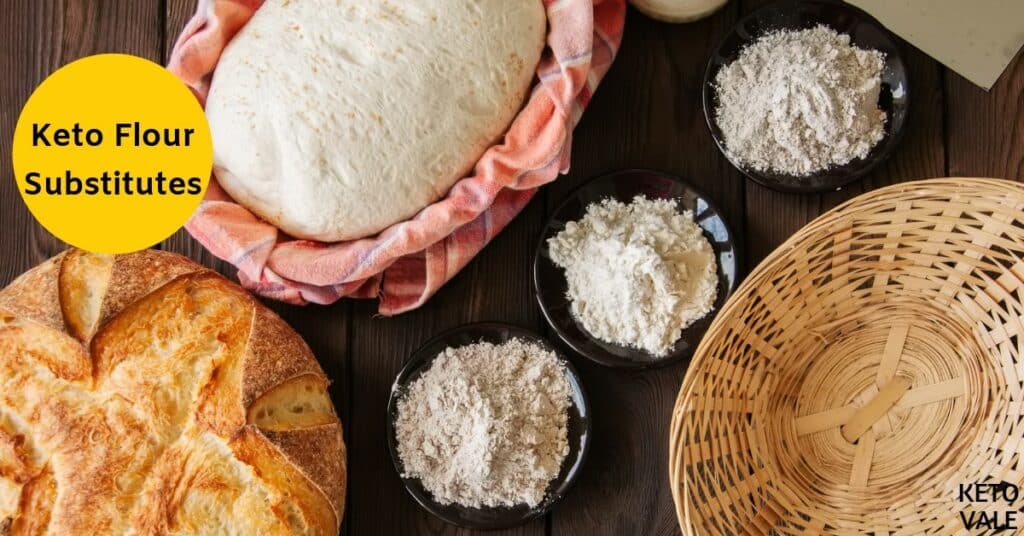If you just started the ketogenic diet, then baked goods are probably one of the first foods that you had to remove from your diet. This is because most baked goods use enriched flour and wheat gluten as a base.
Neither of these ingredients are keto-friendly because they contain too many carbs. Not to mention, they’re hard on your digestive system and instantly provoke inflammation in some people.
The good news is that you don’t have to give up your morning muffins after adopting the ketogenic diet. You just have to use keto-friendly flours to cook and bake with.
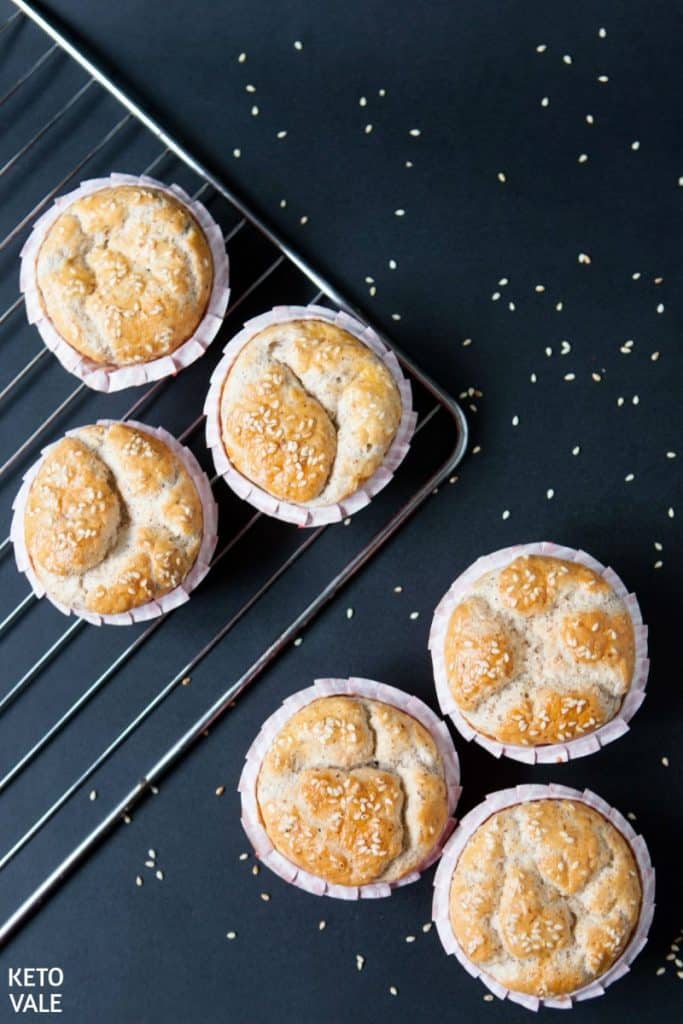
In this article you’ll find the best low-carb, ketogenic-friendly flour substitutes to use in all your cooking and baking recipes.
Why Isn’t Traditional Flour Keto-Friendly?
If you go to the grocery store and take a stroll down the baking aisle, you’ll see a ton of different flour options.
Most recipes call for traditional white enriched flour, which is otherwise known as all-purpose flour. This type of flour is also used in most premade baking mixes.
The problem with white flour (and even wheat flour) is that it contains too many carbohydrates to be considered on a low-carb food list.
It’s also highly processed and has been stripped of its nutrients, which means that it provokes an inflammatory response in the body. For this reason, many people avoid gluten and flour even if they aren’t on a low-carb diet.
Here is the nutritional breakdown of a one-cup serving of all-purpose white flour (1):
- 455 calories
- 1.2 grams of fat
- 95.4 grams of carbs
- 3.4 grams of fiber
- 92 grams of net carbs
- 12.9 grams of protein
In addition to being high in carbs, enriched flours have been stripped of their nutrients and then have had them “enriched” or added back in.
This might sound like a good idea, but your body doesn’t absorb these nutrients as well as it absorbs nutrients from whole foods that haven’t been extracted.
Plus, the carbohydrate response causes your blood sugar to spike. Eating enriched white flour is like eating a bunch of sugar and then taking a multivitamin to make up for the lack of nutrition. It’s a recipe for disaster.
According to one study, whole and refined grain intake was associated with increased inflammatory proteins in human blood. Inflammation is problematic because it is linked to heart disease, obesity and type 2 diabetes (2).
So when you eat enriched flour or any type of refined grain for that matter, you’re indulging in a product that has no nutritional value and is highly inflammatory. Your insulin levels spike, which causes you to feel hungry again shortly after your meal.
You’ll wind up eating more calories because you’re not as satisfied as you would be when eating a high-fat diet and these extra calories go straight to your waistline or adipose tissue.
Best Keto-Friendly Flour Alternatives
The purpose of adding flour to your recipes is to give the ingredients a base or something to mix in with. Flour is a staple in many baked goods, but it doesn’t have to be unhealthy.
You can use low-carb flours that still act as a base to incorporate all your ingredients without spiking inflammation or raising blood sugar levels.
Here are some of the best keto-friendly flour replacements that you can use in all your cooking and baking recipes. They’re good to have on your low carb menu.
#1. Coconut Flour
In addition to being low in carbs, coconut flour is delicious. It has a rich, nutty flavor that instantly enhances any dish.
Coconut also has many health benefits that you don’t get from enriched flour. Coconuts contain a unique, healthy type of fat called medium chain triglycerides or MCTs.
These fats are great for keto dieters because research shows that they instantly boost ketone production in the body.
Coconuts also contain anti-inflammatory, anti-microbial, analgesic (pain relieving), and antipyretic (fever reducing) properties. They have been shown to help protect the skin and reduce the risk of heart disease (3, 4, 5).
You can read more about the amazing health benefits of MCTs here.
Nutrition information
Here is the nutritional breakdown of a 100-gram serving of coconut flour (6):
- 400 calories
- 13.3 grams of fat
- 60 grams of carbs
- 33.3 grams of fiber
- 26.7 grams net carbs
- 20 grams of protein
As you can see, coconut flour contains only 21.8 grams of net carbs per serving. It’s high fiber and fat content helps keep you full for longer while enriched flour leaves you to deal with brain fog, digestive ailments, and hunger shortly after eating it.
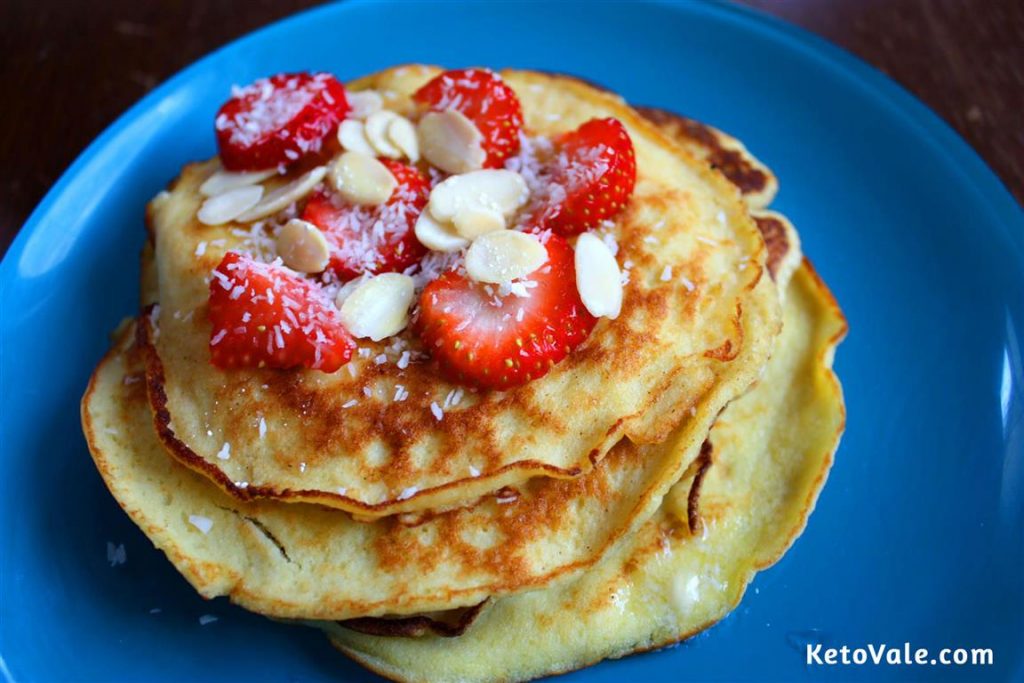
How to use it
You can use coconut flour straight up or mix it with almond flour to replicate the texture of all-purpose flour. Many low-carb baked goods will have you add two parts coconut flour with one-part almond flour.
Coconut flour is a great replacement for all-purpose flour because it’s white, which gives it the appearance of the real thing. It also has a great nutty flavor that instantly enhances most dishes, especially desserts.
Here are some recipes that you can use coconut flour in:
- Keto Coconut Flour Pancakes
- Keto Coconut Flour Biscuits with Garlic Butter Cheese
- Peanut Butter Coconut Flour Cookies
#2. Almond Flour/Meal
Almond flour and almond meal are basically finely ground almonds and can be used interchangeably most of the time. This is a handy tip to know when shopping for almond flour at the store.
It’s made by using the pulp from almonds. You can easily make your own at home, especially if you already make homemade almond milk. You’ll just need to dry out the almond pulp until it turns into the consistency of flour.
Like coconut flour, almond flour has a great nutty flavor. It’s also just as easy as traditional flour to cook with. You can use it as a low-carb breading for your fried chicken or add it to your favorite low-carb pancake recipe. It will turn out great no matter how you use it.
Almonds contain lots of fiber, healthy fats, and vitamins. They have been shown to reduce the risk of heart disease and type 2 diabetes, keep your waistline trim, and curb hunger.
Plus, nuts in general are great for reducing inflammation and keeping your skin healthy looking (7).
Nutrition information
Here is the nutritional information of a 100 grams of a typical almond flour product (8):
- 615 calories
- 54 grams of fat
- 23 grams of carbs
- 15.4 gram of fiber
- 7.6 grams net carbs
- 23 grams of protein
Because of its fiber content, the net carbs in almond flour are minimal. This means that almond flour won’t spike blood sugar levels like traditional flour will.
Furthermore, different almond flour products (unblanched vs blanched) and brands might have slight different nutritional values.
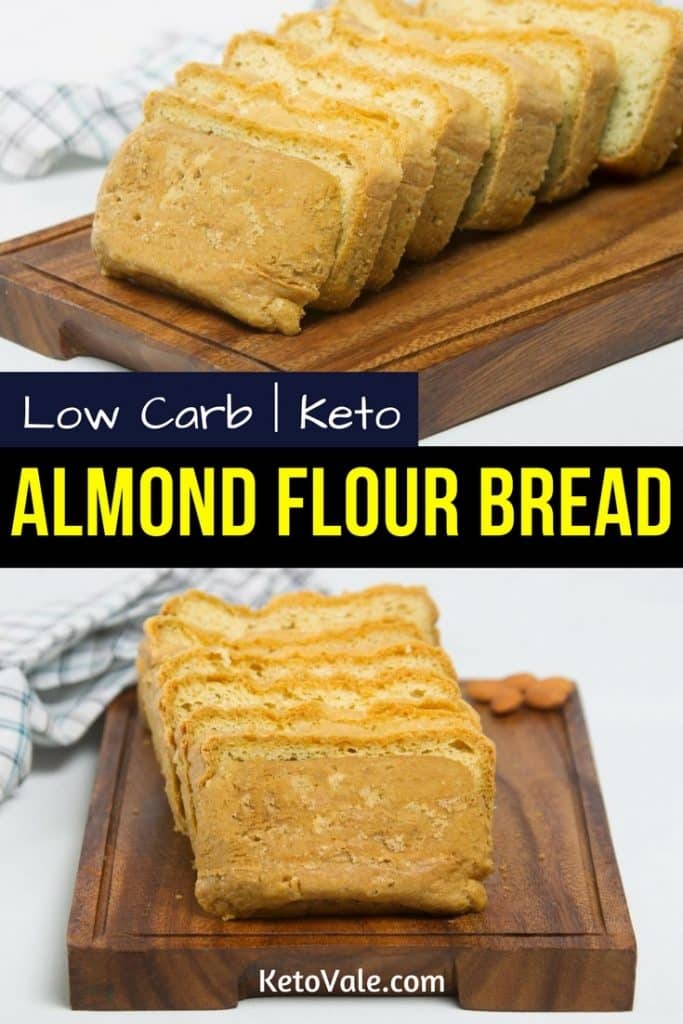
How to use it
As mentioned above, many people use a mixture of coconut and almond flour when making low-carb recipes. This helps even out the density of your base to give your meals proper texture.
You can use almond flour by itself in almost any dish that you would use traditional flour. Make sure you buy the kind that only contains almonds and nothing else.
Here are a few recipes to get you inspired:
- Almond Flour Bread
- Keto Blueberry Muffins with Almond Meal and Flaxseed
- Parmesan Almond Flour Biscuits
- Best Keto Bread with Coconut and Almond Flour
- Keto Fried Chicken Tenders with Almond Flour
#3. Flaxseed Flour/ Flax Meal
Flaxseed is a wonderful low-carb flour to use because it’s considered a superfood, which means that it contains more nutrients than other foods.
In other words, you’re getting a lot of bang for your buck in terms of nutrition when you choose flaxseed flour over traditional flour.
Like almond flour, flaxseed flour is also known as flaxseed meal. You can choose from golden flaxseed or traditional flaxseed meal. Either one will give you amazing benefits. The main difference is in the color of the flaxseed.
Also like almond flour and coconut flour, flaxseed meal has a nutty taste that makes any of your dishes explode with flavor. It’s an excellent source of fiber and vitamin E to give you great looking skin and help reduce intestinal bloating.
Flaxseed is an excellent source of omega-3 fatty acids, which have been shown to reduce the risk of heart disease, depression, type 2 diabetes, obesity, and more (9).
You can read more about the benefits of flaxseed here.
Nutrition information
The following is the nutritional information for a 100-gram serving of flaxseed (10):
- 534 calories
- 42.2 grams of fat
- 28.9 grams of carbs
- 27.3 grams of fiber
- 1.6 grams of net carbs
- 18.3 grams of protein
As you can see, flaxseed contains the least amount of net carbs when compared to almond and coconut flours.
It’s a great source of fiber and healthy fats to keep you full and satisfied for hours.
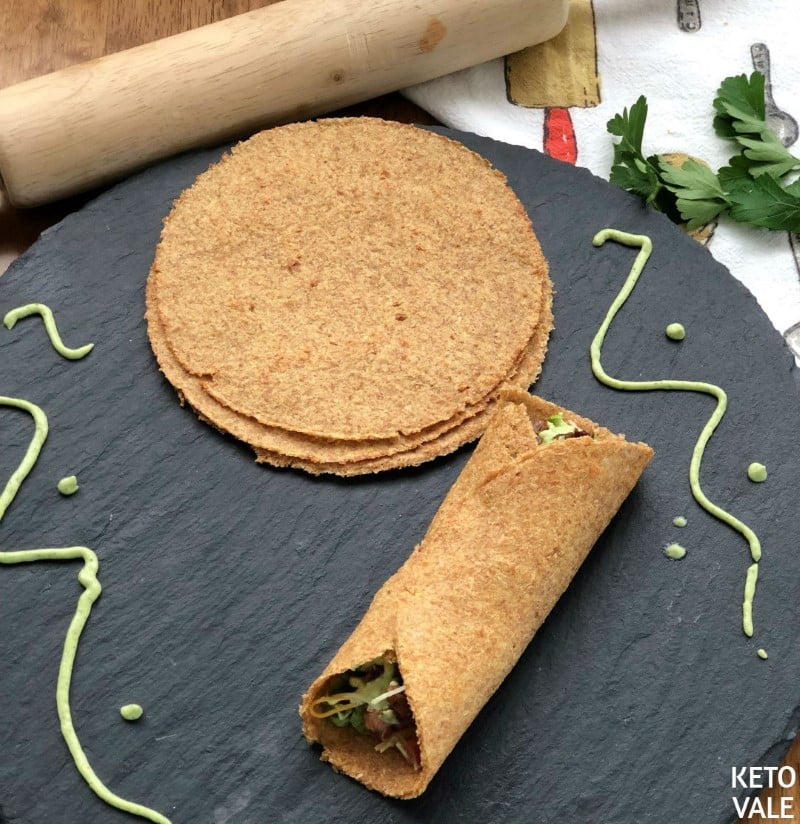
How to use it
You can use flaxseed flour in place of traditional flower in all your baked good recipes. Flaxseed has a bit of a different texture than enriched flour so you may want to cut it with other flours to get your desired density.
Many vegans mix flaxseed flour and water together to replace eggs in vegan dishes because it acts as a great binding agent. It also makes a great thickening agent in place of cornstarch for sauce, gravy, smoothies, etc…
Here are some recipe ideas to get you started that you can use flaxseed flour in:
- Keto Flourless Flaxseed Meal Tortillas
- Almond Flour Flaxseed Pancakes
- Zucchini Fries With Flaxseed Meal
- Keto Flaxseed Chips
#4. Peanut Flour
Peanut flour is less commonly used than almond, coconut, and flax seed flowers. Most people find that peanuts have a distinct taste that doesn’t necessarily pair well with other ingredients unless you’re using it in a dessert recipe.
Also, some people who practice a strict keto diet might want to avoid peanut products in general. If you don’t have any allergy with peanuts, there’s nothing wrong with having it once in a while.
For example, if you are making low-carb peanut butter brownies, then peanut flour is the way to go. But if you’re using peanut flour to make fried chicken, then you may want to use a different type of low carb flour.
Although they are technically a legume, peanuts are usually eaten as nuts. They tend to be higher in carbs than other nuts, so you may want to use peanut flour in moderation if you’re on a low-carb diet.
They tend to be less nutritious than other nuts, but they still provide a good amount of fiber and healthy fats to be considered a healthy low-carb flour.
Nutrition information
Here is the nutritional information for a one-quarter cup (30g) serving of Protein Plus’ peanut flour:
- 110 calories
- 4 grams of fat
- 8 grams of carbs
- 4 grams of fiber
- 4 grams of net carbs
- 16 grams of protein
Peanut flour tends to have more carbs than other types of flours, so use it in moderation when cooking if you’re trying to stay in ketosis.
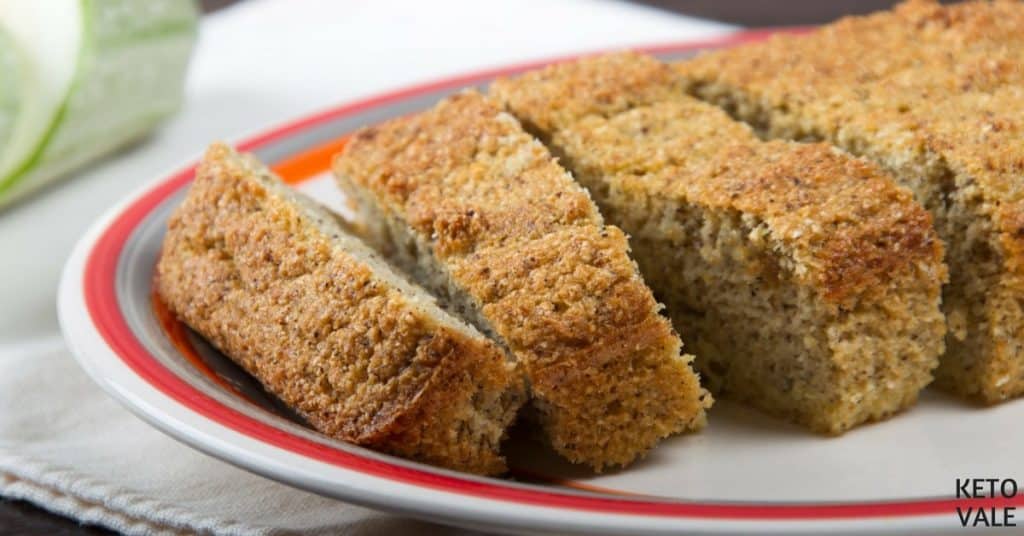
How to use
You can use peanut flour in most dessert dishes, but the flavor might not go well in dishes that include meat and vegetables such as soups and stews. Try playing around with peanut flour until you find the best recipe to use it in.
Keep in mind that most store-bought brands of peanut flour tend to be defatted. Make sure to buy the full-fat kind. You’ll also want to make sure to buy organic and non-GMO peanut flour whenever you want, and don’t buy peanut flour with added sugar or vegetable oils.
Here are some recipes to use it in:
#5. Psyllium Husk
Psyllium husk is a lesser-known low-carb flour with excellent digestive health benefits. It’s a type of prebiotic fiber that is made from the husks of the plant’s seeds.
Most people use psyllium husk for its laxative effects, so you want to be careful not to use too much of it in your baked goods. It also has a less desirable taste than almond or coconut flour.
Research shows that psyllium has been proven to increase fecal size and moisture, which allows it to pass through the digestive tract easier. It also appears to be more effective at helping you form fecal matter without causing excessive gas or bloating.
Because of its high fiber content, psyllium husk flour can be used to help reduce the risk of cardiovascular disease, obesity, and type 2 diabetes. It’s great for promoting digestive health and helping manage blood sugar levels. Plus, it helps keep you full for longer periods.
You can read more about the top health benefits of psyllium husk here.
Nutrition information
The following is the nutritional information for a 100-gram serving of psyllium husk flour (11):
- 378 calories
- 0 grams of fat
- 88.9 grams of carbs
- 77.8 grams of fiber
- 11.1 grams of net carbs
- 0 grams of protein
Psyllium husk does not contain healthy fats like the other flours on our list do. For this reason, it won’t do much to keep you in ketosis. But it’s a great low-carb flour to use in place of traditional white flour.
How to use it
Psyllium husk doesn’t melt in your mouth as coconut flour does. It’s a good idea to add it to recipes in small amounts when you need a fiber boost, but don’t overdo it.
Try cutting it with coconut flour to keep your net carbs down in your favorite baked goods.
It also makes a great thickening agent when used in soups or stews.
Bonus:
These two ingredients are not exactly flour, but you can use them in many baking dishes as one of the main base for the dough.
- Mozzarella Cheese
Cheese is the perfect keto ingredient because it’s high in fat and low in carbs. You can add mozzarella cheese to any of the above-mentioned low-carb flours and it will act as a great binding agent.
Plus, it’s ultra tasty and goes great when paired with meat and veggie dishes. Cheese can also be used to make the dough in some recipes such as fathead pizza and hot pockets.
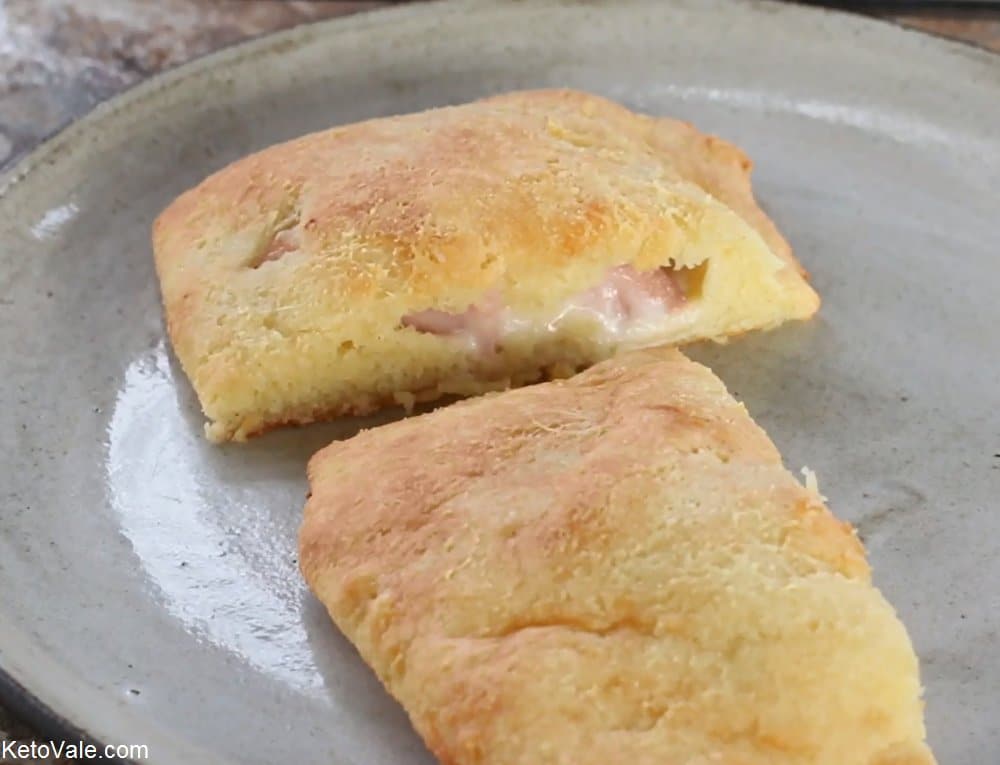
- Cauliflower
Cauliflower is another low-carb ingredient that can be added to low-carb flours to decrease the net carbs. It is often used to make cauliflower pizza, but you can instantly decrease the net carb in any recipe by adding cauliflower.
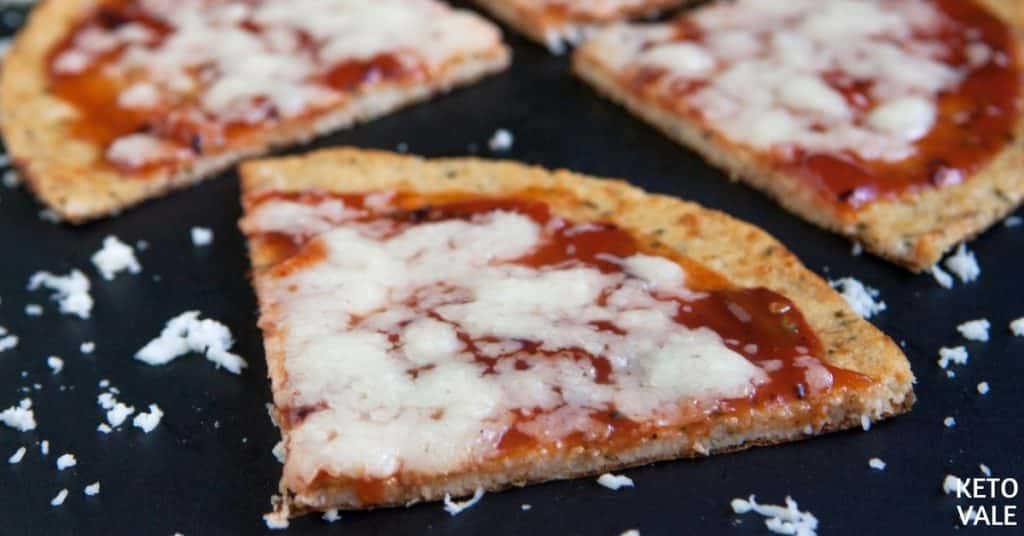
Conclusion
Most baked goods are off-limits on a low-carb diet because they contain traditional white flour, which is otherwise known as all-purpose flour. This type of flour is high in carbs and is extremely inflammatory as it has been stripped of its nutrients and is highly processed.
Luckily, you can use several low-carb flours in place of traditional flour. Our favorite options are coconut, almond, and flaxseed flour. You can even use a combination of each in your favorite recipes to make pancakes, waffles, fried chicken, or anything that requires a flour-base.
We also like the idea of adding cheese or cauliflower to your base to lower the net carbs of any recipe. Try using cauliflower pizza crust or use cheese in our hot pockets recipe.
Enjoy this post? Share to save for later!
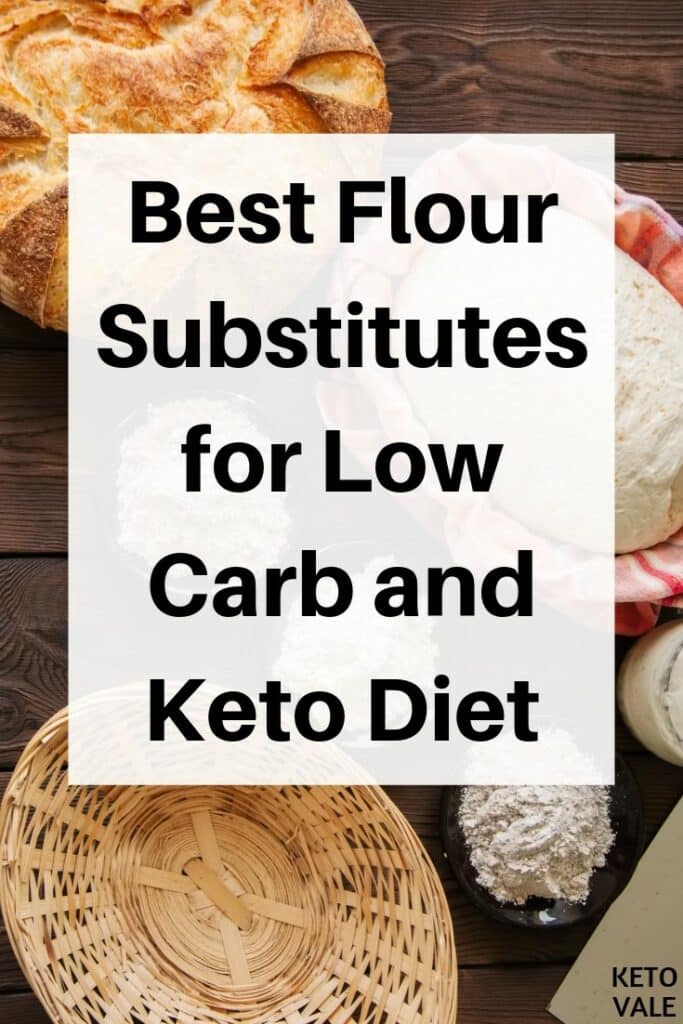
Photo credit: galiyahassan/Depositphotos.com
